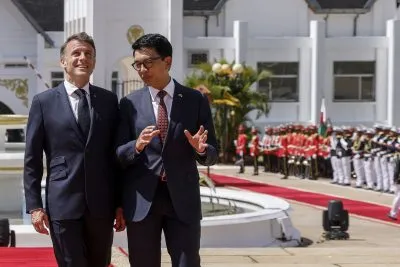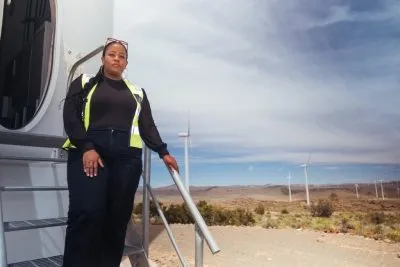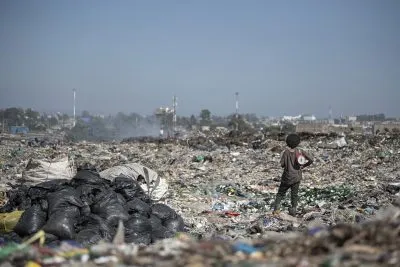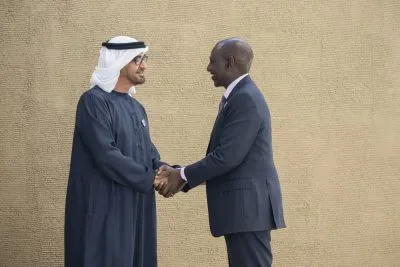In November, Morocco will face the task of keeping world leaders to their climate finance promises when it hosts the UN COP22 climate change conference. Its host status is apt – Morocco stands alone as the world’s climate finance champion.
A report by the Overseas Development Institute (ODI) in December 2014 found that Morocco had received over $600m of the $7.6bn allocated to 11 major international and national funds to tackle climate change, beating Mexico and Brazil.
Between them, Morocco and Egypt have gobbled up 83% of the total climate financing in North Africa.
South Africa is the only African country to come close, securing $466m from the funds.
In Morocco’s case, most of its climate finance has come from the Clean Technology Fund (CTF), which has approved $725m for five projects in Morocco and Egypt. It also attracted $150m in financing from the World Bank for its National Irrigation Saving Programme aimed at vulnerable farmers.
The secret of success
Morocco’s success lies in the urgency with which its government has taken up climate change mitigation and adaptation.
Lacking any natural oil resources, Morocco has the third-lowest GDP per capita in the Middle East and North Africa, and imports almost 95% of its energy. Its region is also the most vulnerable to droughts and other disasters associated with scarce and irregularly available water.
The country launched an ambitious Energy Strategy in 2009 aimed at reaching 42% of renewable energy by 2020, by increasing solar power, wind power and hydropower production by 2 GW each, as well as an energy efficiency programme aiming at reaching 12% energy savings by 2020.
The jewel in its crown is probably the Ouarzazate solar power complex in the Moroccan desert which, when fully operational, will generate 580 MW – enough energy for more than one million homes.
“The right to sustainable development does not mean protecting the environment to the detriment of the economy,” says Moroccan environment minister Hakima el Haite, although she stresses that “green growth…can minimise the impact of imports and their burden on the state budget.
A model to replicate
Backed by political will, there is little reason why Morocco’s model cannot be followed across the region.
“In all these areas there is a deliberate choice and clear policies that have been spelled out by the government,” notes Marie-Françoise Marie-Nelly, the World Bank’s Country Director for the Maghreb.
Solar energy, particularly off-grid, is booming in sub-Saharan Africa, especially in Kenya, Tanzania, and Uganda.
The EU-backed Electricity Access Fund, which plans to invest over €50m in renewable energy businesses, is just one of a series of micro-initiatives aimed at stimulating the sector. Meanwhile, wind power, geothermal energy and biofuels are all garnering increased investment and are increasingly commercially viable.
In Kenya, for example, the European Investment Bank and German and French development agencies are the main investors in the Olkharia geothermal power station and Turkana wind farm.
Yet accommodating domestic tax regimes and energy policies are needed alongside investment.
One solution would be for African governments, and others, to scrap the tax subsidies that oil has enjoyed for years. With oil-exporting nations such as Nigeria and Angola facing a precipitous loss in revenue as a result of plunging oil prices, there may not be a better time politically.
The stuttering biogas sector is also the result of high costs and the lack of competition in the sector.
For example, a high-quality biogas engine costs around $750/kW to buy, compared to between $10-20/kW for a car engine. One key difference is that the car engine has the benefit of huge manufacturing scale; another is that the scale of the industry drives competition. Without competition, in turn spurring technological innovation, a biogas sector of any significance is not going to develop.
Johnnie McMillan, managing director of Tropical Power, which has built a grid-connected solar and bioenergy plant in Kenya, and is planning a second plant in Ghana, says that commercial viability for the sector will need engines and equipment to be exempted from import duties.
At the same time, increasing the tariff governments pay for renewable energy on the grid would also encourage investment.
“Our aim is to understand how we can significantly improve the technology in order that we can make lower tariffs work in Kenya and further afield,” he says.
A post-COP funding boom?
The final agreement reached at the Paris climate change conference last December steered clear of making the promise of rich countries raising $100bn per year for climate finance legally binding, but it does require governments to come up with a new target above $100bn a year by 2025.
The final bill will “certainly run into hundreds of billions, if not trillions of US dollars annually after 2030,” argue the Heinrich Boll Stiftung and Overseas Development Institute think-tanks.
The ODI estimates that wealthy countries keeping their promises made in Paris would gather together around $19bn a year in taxpayers’ money by the end of the decade. Development banks have pledged to increase their climate finance facilities to over $30bn, while private sector counterparts Crédit Agricole, Bank of America, HSBC, BNP and Société Générale have also made multibillion-dollar commitments.
In other words, the $7.6bn total approved by the end of 2014 will look like very small potatoes. Development aid and public/private partnerships have increasingly focused on renewable energy projects. Development banks have pumped several billion euros into renewable energy projects in Africa over the past decade.
The main challenge is fragmentation – a plethora of different climate finance funds, with too much overlap and cash spread too thinly. For example, a total of 204 climate adaptation projects have been approved by the World Bank’s Clean Technology Fund and Least Developed Countries Fund since 2003, the largest of which is a $63m climate resilience programme in Niger approved in 2011.
“Africa has already been short-changed by climate change. Now, we must ensure that Africa is not short-changed with climate finance,” said Akinwumi Adesina, President of the African Development Bank, following the COP summit.
Morocco emerged as Africa’s green growth champion in the climate finance era of austerity. The challenge is for its neighbours to do the same in what should be easier funding climes.
Benjamin Fox
Want to continue reading? Subscribe today.
You've read all your free articles for this month! Subscribe now to enjoy full access to our content.
Digital Monthly
£8.00 / month
Receive full unlimited access to our articles, opinions, podcasts and more.
Digital Yearly
£70.00 / year
Our best value offer - save £26 and gain access to all of our digital content for an entire year!
 Sign in with Google
Sign in with Google 


